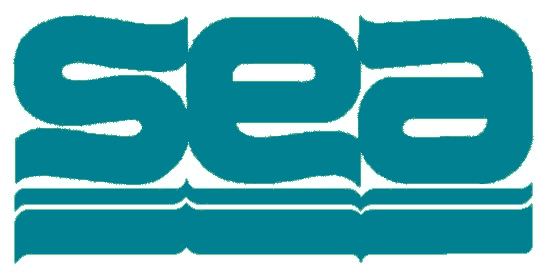In Business Since 1981
Engineered Products by SEA Engineering Co Inc
Performance Textile Test Instrumentation
S.E.A. Engineering has designed products over the years from experience gained in projects in the environmental protective garment sector. This section describes a few of these products. They are instruments which are used for determining the moisture and thermal resistance of high-performance textiles used in the manufacture of military and survival garments. These products can be updated to utilize latest technologies and produced to order for clients that have a specific need.
Water Vapor Diffusion Apparatus (CGSB & VBW)
A Water Vapor Diffusion Apparatus (WVDA) is a system designed to determine the resistance of the diffusion of water vapor through fabric samples. A WVDA typically has a cell that maintains a moisture gradient across a specimen of a known area. The water vapor flux through the specimen is determined by a volume or mass measurement and the moisture resistance is calculated from this measured value.
SEA Engineering originally designed and produced two types of WVDA: the CGSB type and the VBW type. The CGSB type measures the water vapor flux using a mass measurement per the Canadian Government Standards Board (CGSB) test procedure. The VBW type measures the water vapor flux using a volume measurement per the Van Beest and Wittgen procedure. The CGSB cell can be used for making absolute measurements of the moisture diffusion through fabrics that are non-hydrophillic; and relative measurements for fabrics that are hydrophillic. The VBW cell can be used for making absolute measurements of the moisture diffusion through fabrics that are hydrophillic; and relative measurements for fabrics that are non-hydrophillic.
In CGSB mode the wet membrane, usaully made from Teflon, is positioned above the test specimen, while the dry membrane, also made from Teflon, is placed below it. In VBW mode, the dry mebrane, typically made from Teflon, is positioned above the test specimen, while the wet membrane, made from filter paper, is located below it.
Both types of WVDA consist of a Water Vapor Diffusion Cell (WVDC) and an air supply system mounted in a tower. The picture shown is of the CGSB type. Assembly drawings of both types are shown.
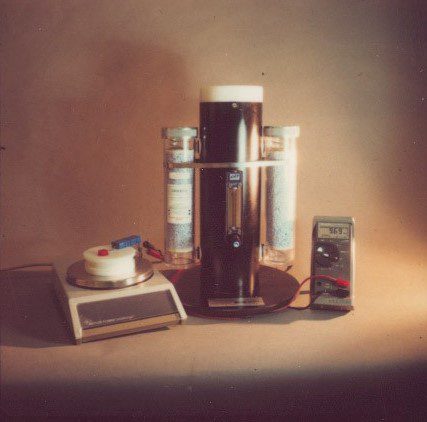

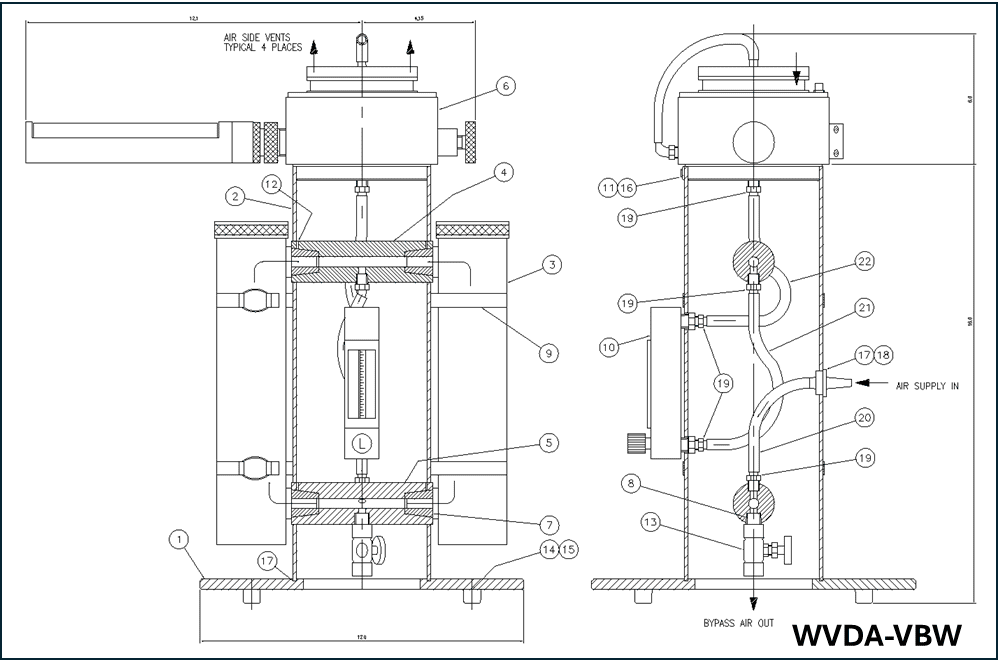
Model 643 Combination CGSB/VBW Water Vapor Diffusion Apparatus
The Model 643 WVDA emerged out of the need to combine the features of both the CGSB and VBW cell types into a single test system. This was accomplished by creating a test cell that can be flipped over to operate with the water side above the specimen as in the CGSB test or the water side below the specimen as in the VBW test. A section through the cell is shown here in the CGSB test modes.
The test system consists of the Water Vapor Diffusion Cell (WVDC), a water supply system and a dry air supply system. The water supply system features a cell fill reservoir, connecting valves, tubing, fittings and volume measurement pipettes. The air supply system has a flow meter and two air-drying columns, complete with tubing and fittings. Required equipment also includes a power supply to run the cell heater, a multimeter to read the cell temperature sensors and a top-loading laboratory balance to measure the moisture loss from the cell. These last three can be supplied with the system or supplied by the user.
Another feature of the combination system is that the moisture loss can be measured by mass or volume in either of the test modes.



Model 684 Combination Water Vapor Diffusion Cross-flow Cell
This cell uses a unique combination cell design featuring crosswise air flow instead of radial as in the model 643 cell. As with other cells, this cell sets up a moisture gradient across a test specimen by maintaining a moisture source on one side and a moisture sink on the other. The source is water held behind a membrane, and the sink is dry air behind another membrane. The cell may be used to do moisture diffusion tests for:
The Canadian Government Standard Board
- (CAN/CGSB – 4.2 No. 49-99)
- The Van Beest & Wittgen (VBW) Method
This cell has the following features:
- Specimen position (air gap) on the wet side can, without opening the cell, be adjusted anywhere in the test gap from up against the wet membrane to up against the specimen.
- The air cap on the dry side of the specimen can be adjusted with the use of spacers provided from 0 to 10 millimeters in increments of 1 millimeter.
- The cell can be used for making absolute measurements of the water vapor diffusion of a wide range of textile materials, including those that have microporous or hydrophilic laminations or coatings.
- The moisture mass flow measurement can be made using a weight measurement method or a volume measurement method.
- Measurements are made without opening the cell, resulting in no disturbance of the atmosphere in the cell during a test, leading to more reliable results.
- Dry air flow is horizontal across the dry side cavity.
- The Model 684 cell has a crosswise airflow as opposed to the Model 643 cell which has a radial airflow. The crosswise air flow can reduce bulging of the membrane for higher airflow rates. One cell can be readily substituted for the other.


Model S684-3 Three-Cell Automated Water Vapor Diffusion Apparatus
The Model S684-3 Automated Water Vapor Diffusion Apparatus (AWVDA) is a multi-cell system that enables an operator to run three separate tests simultaneously under computer control. This model consists of a workstation supporting the test hardware, a data acquisition module, and interface boards that mount in a PC.
The workstation provides space for three Water Vapor Diffusion Cells (WVDC) on laboratory retort stands and three associated auxiliary water reservoirs mounted on top-loading balances. It also provides mounting for the cell water fill reservoirs and the drying columns, flow meters, regulators, and tubing for the dry air supply system.
The system uses the Model 684 unique combination cell design, which may be used for moisture diffusion tests to the Canadian Government Standards Board (CGSB) Standard or the Van Beest and Wittgen (VBW) method. This cell is similar to the combination cell used in the Model 643 manual WVDA, except that the dry air flow through the air-side half-cell is from side to side as opposed to radial.
The cell creates a moisture gradient across the specimen by providing a means for mounting the specimen between a water source and a water sink. The source is water held behind a “wet” membrane, and the sink is dry air flowing behind a “dry” membrane. Moisture diffusion is measured by the computer as a mass loss from the water cavity behind the wet membrane. Moisture diffusion can also be measured manually as a volume loss.
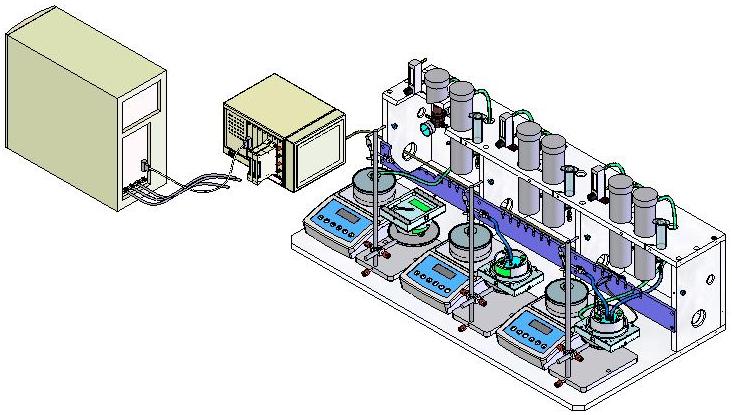
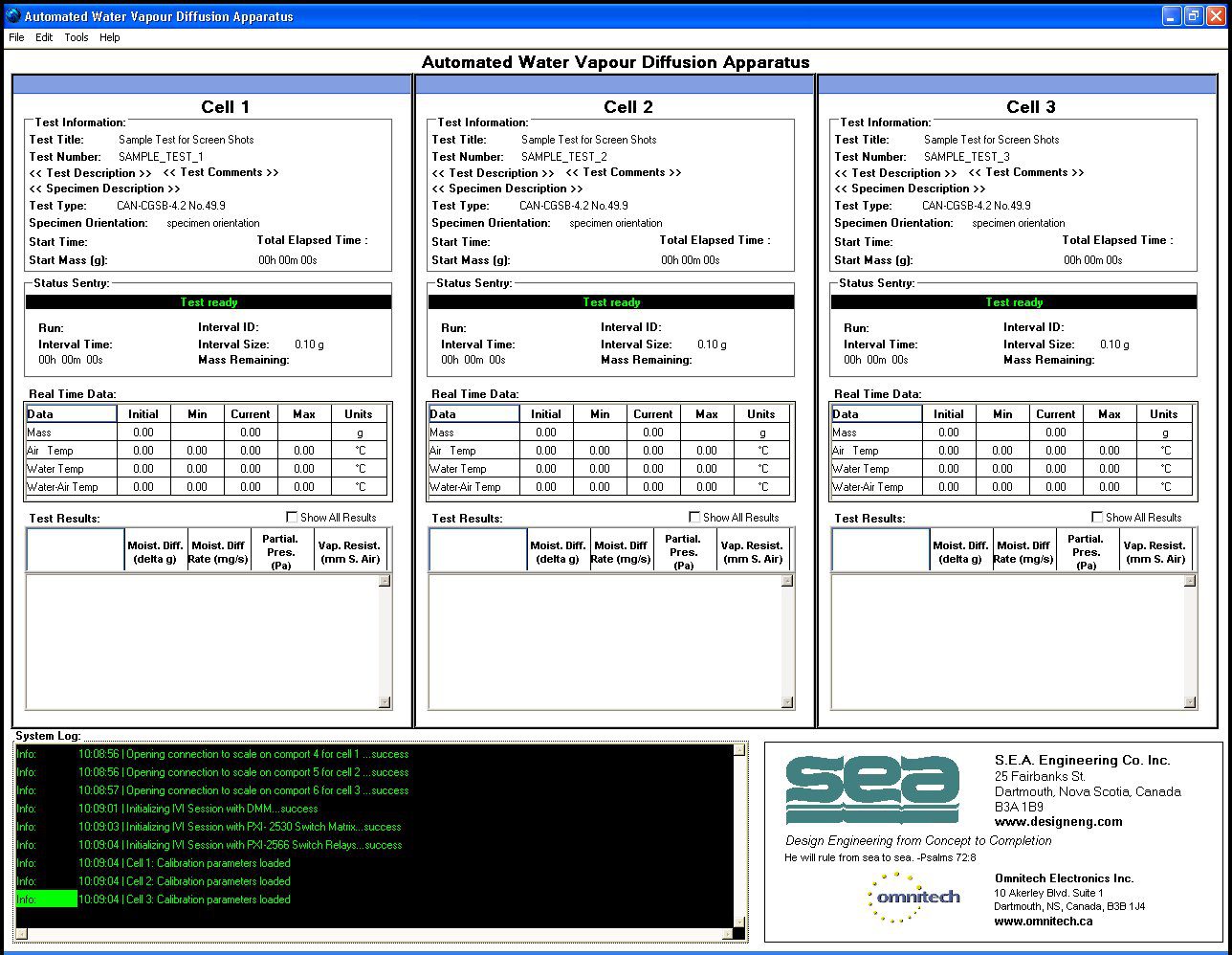
Sweating Hot Plate (SHP).
A Sweating Hot Plate (SHP) is an instrument for determining the moisture and thermal transport through multi-layered sections of high-performance garments that are used in military and survival applications. The working surface of a SHP has a “skin” surface of a known area whose heat and sweat flux is maintained and measured by a computer measurement and control system. A specimen is placed on this surface and its thermal and moisture resistance are determined by the computer.
The SEA Engineering sweating hot plate has thses features:
- The Heat loss from the test plate is guarded by a heated sweating guard ring and a backing heater.
- Sweat glands are controlled individually to produce uniform and accurate water flow at the test surface regardless of orientation.
- The sweat reservoir is sized for test runs up to twenty-four (24) hours.
- The heaters are of etched foil design for optimum surface temperature uniformity and fast response.
- The temperature sensors are RTD’s of a thin film design for optimum surface temperature averaging and fast response.
- The plate is mounted to allow rotation thus permiting tests in all orientations.
- The hot plate system can optionally be controlled by the user’s data acquisition/control system or PC Compatible computer.
- The basic unit is sized for placing in a 24″ X 24″ X 24″ environmental chamber.
- The system can be supplied with a hot plate extension so that the unit can be mounted external and under an environmental chamber with the extension protruding through the floor of the chamber. Thus the environmental chamber need only be big enough the fit the test surce itself.
- The system can be supplied with its own environmental housing. In this configuration, the temperature, humidity and pressure over the test specimen can be controlled and the medium over the specimen can be air or water. This allows the simulation of in-air or underwater conditions.
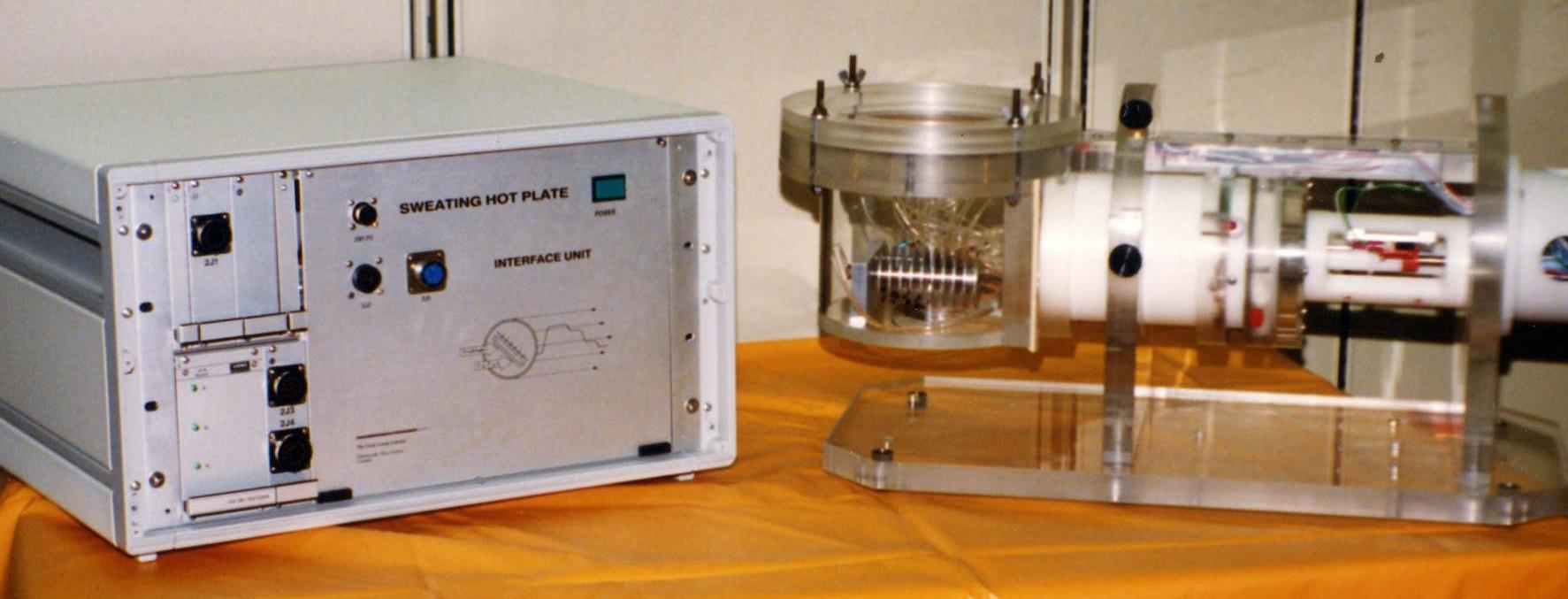
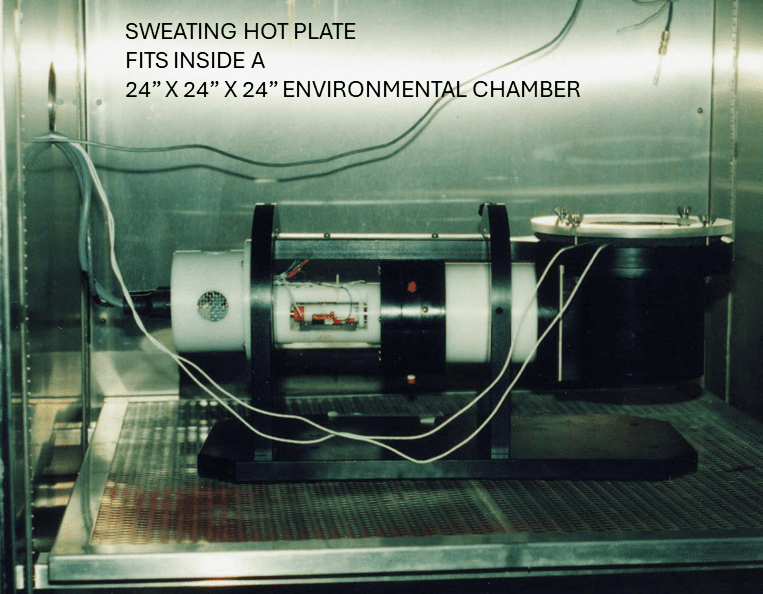
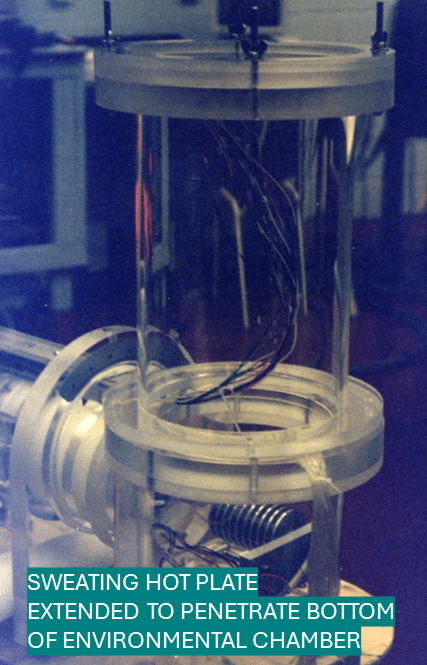
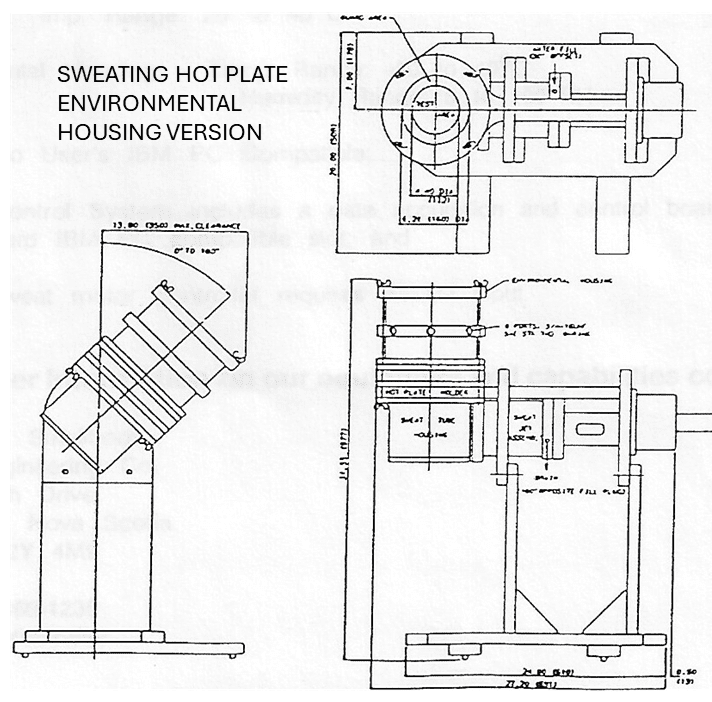
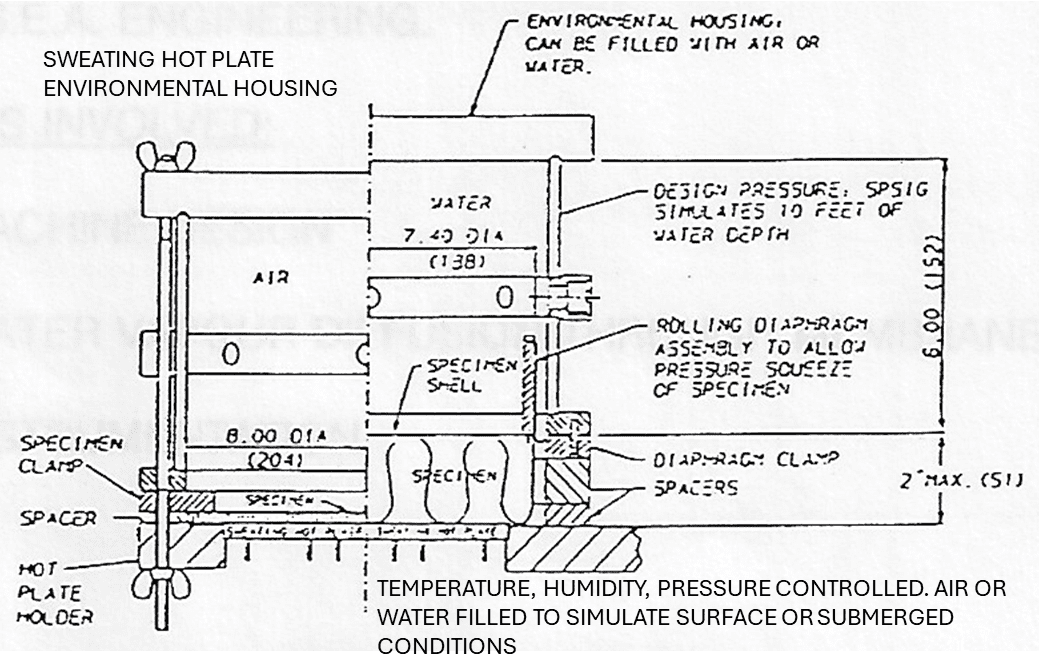
Breathing Equipment Test Instrumentation
Leaveraging its experience in underwater breathing apparatus design, SEA Engineering has designed test instrumentation for the diving industry. A description of one such product follows. This product can be updated to utilize latest technologies and produced to order for clients having a need in this area.
Breathing Simulator Test System
A breathing simulator simulates human respiration for testing mining, fire fighting, diving and medical breathing systems. Breathing simulators are used to measure the loading that breathing equipment applies to the human breathing system when in use under various conditions.
The SEA Engineering breathing simulator consists of a head and torso manikin connected to a breathing machine which is controlled by a programmable data acquisition system, motor controller and computer.
The output of the breathing machine is programmed to simulate human respiration at various conditions and the response of the apparatus under test is measured. Programmable breathing output performance parameters are: respiratory minute volume, tidal volume, frequency and wave form. Test apparatus response parameters measured are compliance and resistance. Work of breathing is calculated from these parameters.
The system is designed to include measurement of other parameters such as pressures and temperatures at various breathing circuit locations, oxygen concentration, carbon dioxide concentration and breathing gas temperature and humidity. In addition, features can be incorporated to control oxygen consumption and carbon dioxide production for a more complete real-world simulation. Based on specific user’s requirements, these additional features can be added to the basic system.
The following features are part of the basic breathing simulator system:
- The system is controlled by a menu-driven program operating on a Windows computer.
- The computer displays current test results and stores data for post-processing and analysis.
- The breathing apparatus under test can be connected to the manikin by helmet, full face mask, oral nasal seal or mouthpiece adaptor.
- The face is an elastomer molding that simulates the texture of a human face. The molding can easily be changed to other user-supplied shapes.
- A wide variety of breathing apparatus configurations can be mounted on the head and torso manikin, including those incorporating neck seals.
- The head and torso manikin can be rotated about two axes.
- Output breathing parameters are fully programmable allowing a wide range of breathing profiles.
- The basic system can be expanded to meet specific application test requirements.
- The small overall size of the system enables it to be set up and operated in a hyperbaric chamber.
- The head and torso manikin can be operated in a wet pot or test tank.


Elevate Your Engineering Experience with SEA Engineering Co Inc Products
At SEA Engineering Co Inc our products are more than just items; they are the result of precision and innovation. As your trusted Engineering Product Developers, we take pride in presenting solutions that redefine expectations. From Protective Garment Testing Equipment to Water Vapor Diffusion and Moisture Diffusion designs, our commitment to excellence shines through. As Sweating Guarded Hot Plate Designers, we ensure every product is a masterpiece of precision.
